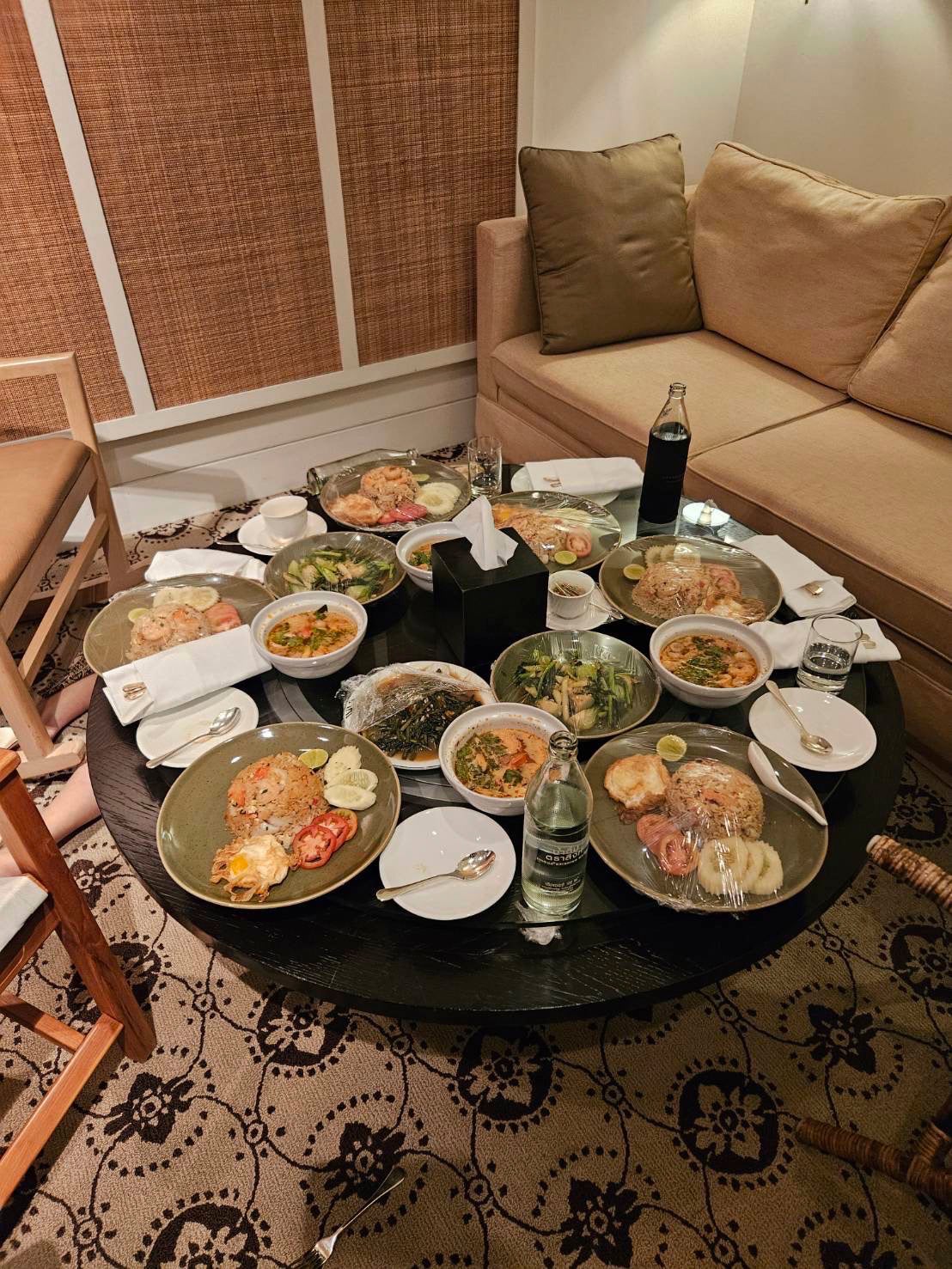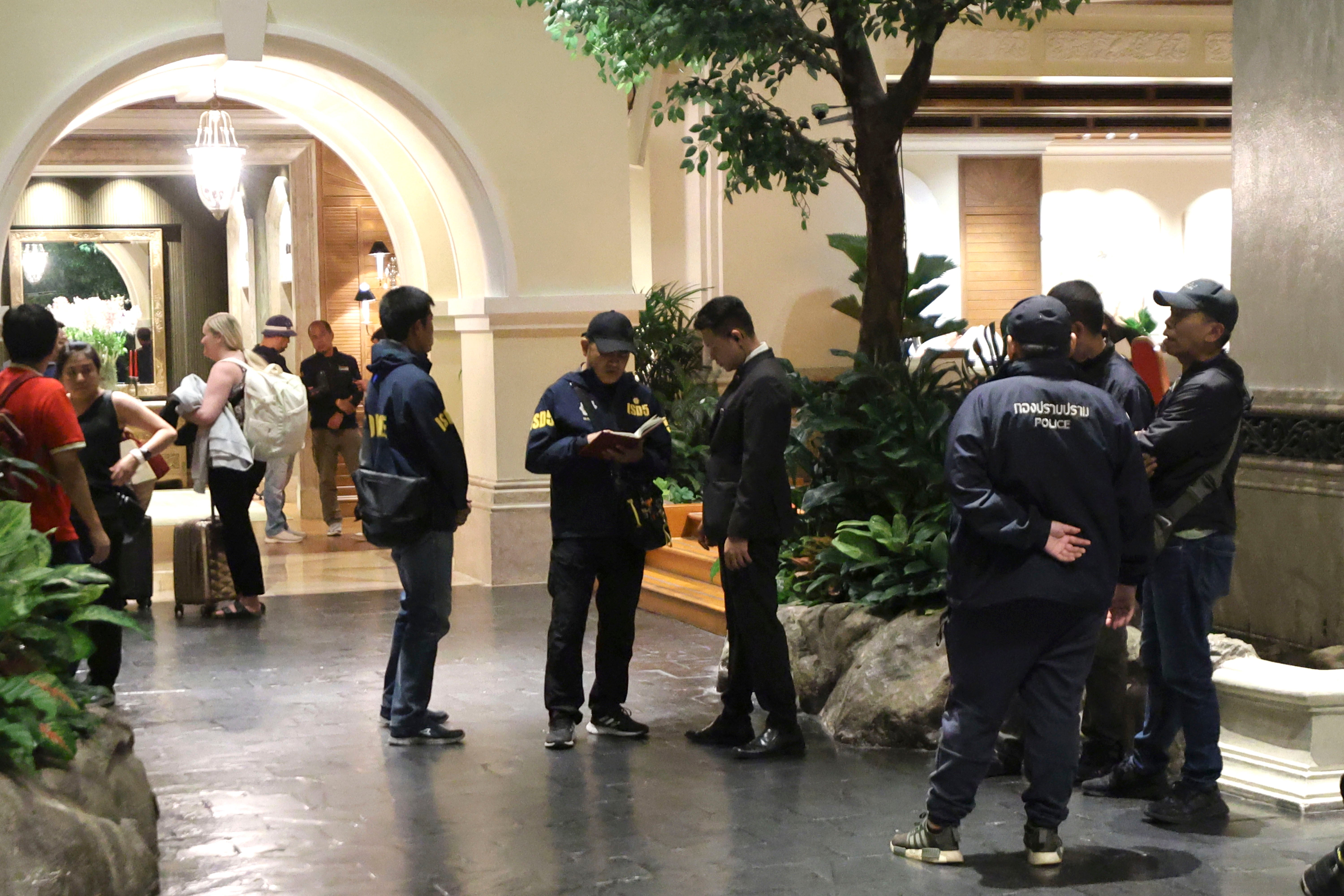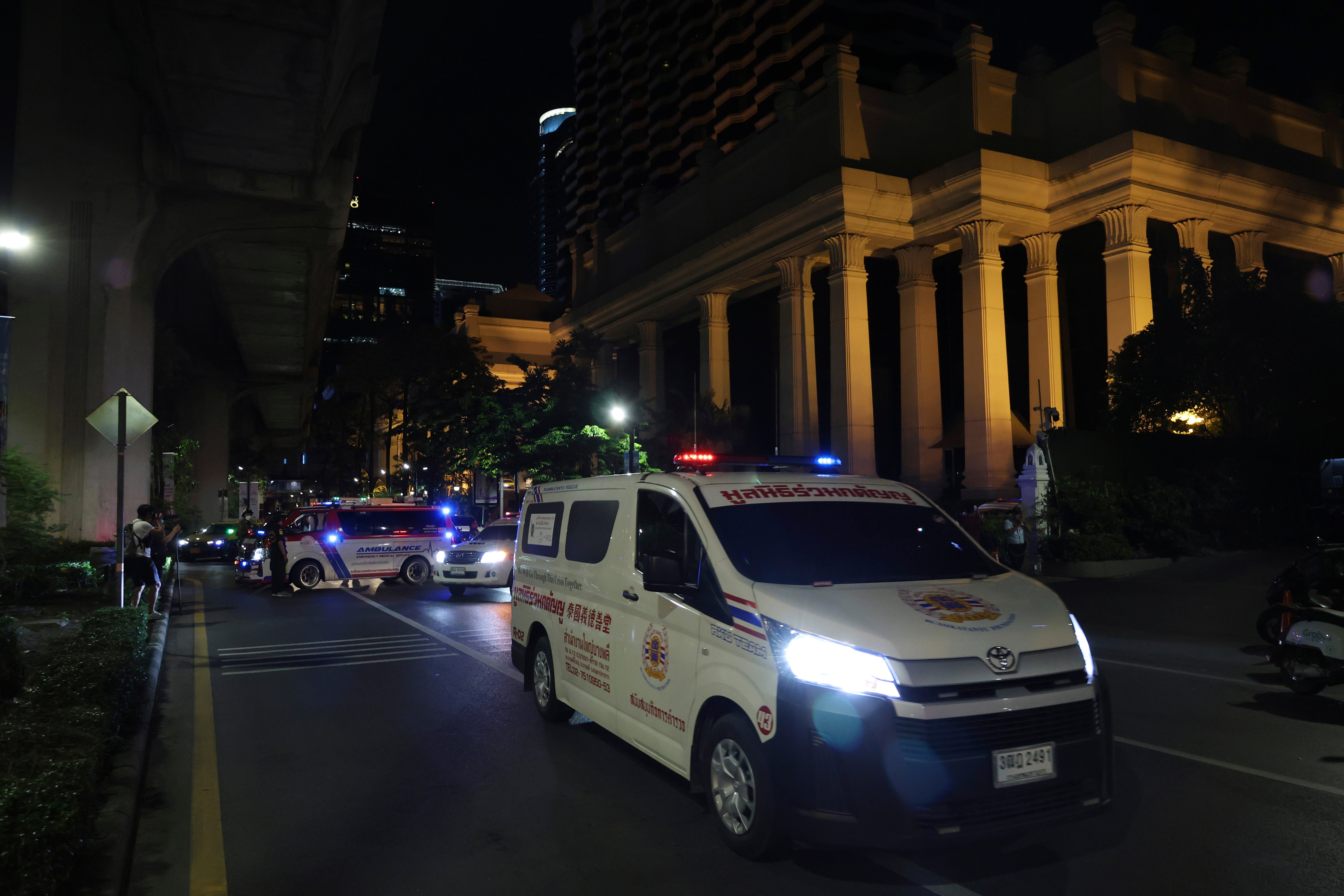Support truly
independent journalism
Our mission is to deliver unbiased, fact-based reporting that holds power to account and exposes the truth.
Whether $5 or $50, every contribution counts.
Support us to deliver journalism without an agenda.

Six people were found dead in a locked hotel room in Bangkok.
Thai authorities have been quick to stress they believed the incident involved a personal dispute and did not reflect any threat to foreign visitors.
Thai police believe the six — four Vietnamese nationals, and two US citizens of Vietnamese heritage — died of cyanide poisoning motivated by a dispute over an investment. Forensic evidence and police interviews with relatives of the dead are said to support their hypothesis.
Here’s a look at what we know so far — and how.
Police were alerted on Tuesday afternoon that six bodies, three men and three women, had been found in a fifth-floor hotel room in the five-star Grand Hyatt Erawan, in the heart of Bangkok’s tourism district.
The six — some of whom were staying in other rooms in the same hotel — had been scheduled to check out that day or the day before. Security footage showed that the group had gathered in one room on Monday with their packed luggage.
The room’s locked front door and security camera footage showed that no one else had entered the room after hotel staff delivered the meals on Monday afternoon.
The bodies were found scattered, some in the living room and some in the bedroom, suggesting it was not a ritual suicide. There were also no signs of theft, the suitcases were unopened.

Police also found a table full of uneaten room service meals, and six teacups whose contents had apparently been consumed. They noticed an unidentified sediment in the cups.
The police also said there were no signs of struggle and no injuries on the bodies, leading them to suspect poisoning as the cause of death.
What did the forensic evidence show?
When police analyzed the sediment in the teacups, they found traces of the deadly poison cyanide. Initial results from autopsies, performed at Bangkok’s Chulalongkorn Hospital, also turned up traces of cyanide in all six bodies.
Forensic specialists said that their organs showed signs of asphyxiation — an effect of cyanide poisoning — supporting the conclusion that the fast-acting poison was likely the cause of death. But they cautioned that a detailed analysis must be performed to confirm the finding.

It’s Thailand‘s second highly publicized case of alleged cyanide poisoning in as many years. Sararat Rangsiwuthaporn, or “Am Cyanide” as she was nicknamed in the media, was accused last year of killing at least 14 people to whom she owed money over the course of years. A 15th was also poisoned but survived.
Who killed whom, and why?
Police say they are still investigating, but they’ve made it clear that they’re focusing on a Vietnamese American woman who may have had a financial dispute with two other people in the room.
Police said they believed one of the six carried out the killings before committing suicide, but did not name the suspect.
However, they said one of the two Vietnamese Americans, Sherine Chong, was the only person in the room when the room service food was delivered on Monday, and that she had refused the staff’s offer to brew the tea, saying she would do it herself.

They said that a Vietnamese couple who were among the dead had invested about 10 million baht ($278,000) with Chong and a Vietnamese woman in a construction project that had not shown any progress, and they may have been meeting to resolve a dispute about the project. The investment was said to have been connected to the construction of a hospital in Japan.
It was unclear whether the two other people whose bodies were found were part of the dispute.
Who were the six people who died?
Thai police identified the dead as two U.S. citizens — Sherine Chong, 56; and Dang Hung Van, 55 — and four Vietnamese nationals — Nguyen Thi Phuong Lan, 47; Pham Hong Thanh, 49; Tran Dinh Phu, 37; and Nguyen Thi Phuong, 46.

Little personal information has emerged about the six, though Vietnamese media reported that Phu is a prominent makeup artist from the central city of Da Nang who works under the professional name Phu Gia Gia, and who told his family that he was making a three-day work trip to Thailand.
What has been the reaction of the governments involved?
Thai Prime Minister Srettha Thavisin went to the crime scene just hours after police to say that incident should not affect tourism, which is a major revenue earner for the country.
Vietnam’s Prime Minister Phạm Minh Chính instructed the Foreign Ministry to work with Thai officials in investigating the deaths, and to make sure that the safety and rights of Vietnamese citizens are protected.
U.S. State Dept. spokesperson Matthew Miller in Washington offered condolences to the families of the dead. He said the U.S. is closely monitoring the situation and would communicate with local authorities.
He did not say if the FBI would be involved in the investigation, as had been announced by Srettha. The FBI is empowered by U.S. law to investigate crimes committed against U.S. citizens abroad.

